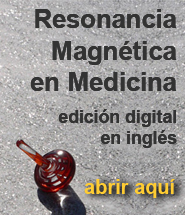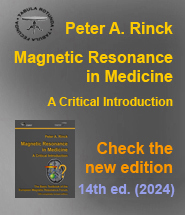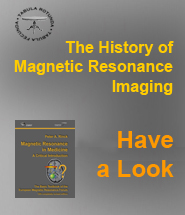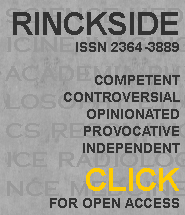20-10 Magnetic Resonance Imaging Equipment
With the exception of the scientific instrument manufacturers, the medical hardware makers had no background in NMR.
Very early NMR attracted the attention of Russel and Sigurd Varian, two brothers who were involved in military technology development in World War II. The Californian company became, first and foremost, a major government contractor for highly sophisticated and classified military technologies. NMR equipment for research remained an important sideline for the next 50 years (Figure 20-48).
Other scientific manufacturers include JEOL in Japan and Bruker Spectrospin in Germany and Switzerland. Most scientific developments in MR imaging were done on Bruker machines, even the competition used Bruker equipment inside their machines. Today Bruker is a US-American enterprise with a wide range of interests, from scientific equipment to military applications.
 |
|
Figure 20-48: |
 |
|
Figure 20-49: |
The first hardware manufacturer to get involved in whole-body imaging was Electric and Musical Industries (EMI) in 1974. Later the company was taken over by Picker (later Marconi, today Philips). Philips started research into MR imaging at the same time; P. Rob Locher, André Luiten (Figure 03-01b), and Piet van Dijk were seen at many scientific meetings. Siemens got involved in 1977, with – among others – Arnulf Oppelt, Wilfried Loeffler and Andrew Maudsley working on the project. Johnson & Johnson/ Technicare began their development in 1978/79, and Instrumentarium in Helsinki at about the same time. Others followed in the 1980s and 1990s.
M&D Aberdeen was a company originating from the research group at Aberdeen University. It had one machine in Geneva, but it disappeared a long time ago, as have a number of other companies.
 |
|
Figure 20-50: Raimo E. Sepponen. |
Another effort was the Finnish MR imaging machine. Raimo E. Sepponen (Figure 20-50), together with a number of other researchers, among them the surgeon Jorma T. Sipponen, aimed to develop a method and device for detection of internal hemorrhages. Their first clinical MR imaging model was installed at Helsinki University Central Hospital in June 1982 operating at a field strength of 0.17 T. The second unit operated at 0.02 T, and later units operating at 0.04 T, which – at least at that time – was politico-commercially a step in the wrong direction. Nowadays, such intelligent and sophisticated approaches would be welcomed again.
With few exceptions, all early magnets for MR imagers were produced by Oxford Magnets. Still today many magnets stem from companies in the Oxford area.
![]()

Some thoughts written at the occasion of the 30th anniversary of clinical MR imaging in 2010.












